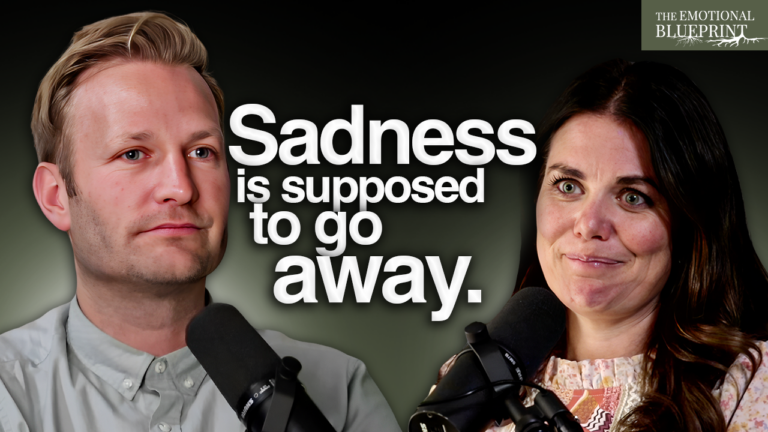Sadness is one of the heaviest emotions we experience. It can feel like a thick fog, a weight pressing down on our chest, or an invisible wall between us and the life we want to live. But what if sadness isn’t something we need to fear or avoid? What if it’s simply a messenger, gently calling us to something more?
This episode of the Emotional Blueprint explores how sadness, when honored and felt, can actually lead us to something powerful: hope.
Watch or Listen On Your Favorite Streaming Service
Sadness as a Messenger
Every emotion we feel carries a message. Sadness, specifically, is a signal that we are experiencing a loss of hope. Whether it’s the loss of a relationship, a dream, a future we envisioned, or even just the belief that things can get better, sadness shows up to tell us, “Hey, something important is missing.”
But sadness isn’t meant to stay. It has a purpose, and once it has delivered its message and we allow ourselves to feel it, we can begin the journey back toward hope.
The Natural Order of Healing
Healing isn’t about diving straight into trauma. It’s about following a natural and gentle order—balancing ourselves emotionally before going deep. Many people prematurely try to process trauma intellectually, only to discover later that the emotional weight is still there. This can lead to frustration and discouragement.
Instead, we must learn to listen to our emotional bandwidth. Pushing too hard when we’re not ready can be re-traumatizing. Emotional healing is meant to be a gentle process. One that honors your body, your spirit, and your capacity in the moment.
A New Way to Let Go
Letting go doesn’t have to be dramatic, chaotic, or painful. It can be done with ease and grace. Healing can be soft, sacred, and peaceful. One of the most powerful practices shared in this episode is the idea that when we’re ready to let go of sadness, we must replace it with hope. Not just surface hope, like “I hope it’s sunny tomorrow,” but deep hope—the kind that comes from truth.
Hope is feeling the truth of something we can’t yet see.
Sadness softens us. It prepares our hearts to receive that truth.
The Steps to Healing Sadness
- Feel the Sadness – Truly allow yourself to feel it without judgment. Sadness needs to be felt to be released.
- Seek Hope – Once you’ve felt it, ask yourself: What question could I ask that, if I received an answer, would help me feel hopeful again?
- Ask with Sincerity – Whether through prayer, meditation, journaling, or stillness, direct that question to a source greater than yourself—God, nature, your higher self, or the universe.
- Listen for the Answer – Pay attention to any positive emotions that arise—peace, love, comfort, clarity. These emotions are indicators of truth.
- Act on the Truth – Let that truth guide your next steps. Allow it to shift your perspective, lighten your spirit, and carry you forward.
What if You Don’t Believe in a Higher Power?
Hope can still come. Many find connection and comfort through nature, art, music, or simply being still. Others rediscover belief in themselves when all else seems lost. What matters most is openness—the willingness to seek something greater, whether it’s within you or beyond you.
Even when it feels like there’s no one else to count on, you can count on yourself.
The Importance of Spiritual Openness
Sadness that stays often reflects spiritual disconnection. When we lose touch with anything greater than ourselves—be it God, nature, or our own soul—it becomes harder to find hope. Reconnecting with spirit, in any form, brings that hope back online. It’s not about religion. It’s about relationship.
From Theory to Practice: Replace Sadness with Hope
When you feel sadness rising, ask yourself:
- What am I really sad about?
- What do I need to know in order to feel hopeful again?
And then ask, wait, listen.
Stillness is your ally. Trust what comes through when your mind quiets and your heart softens.
Final Thoughts
Sadness is not your enemy. It’s your teacher. And its lesson is this:
You are not meant to stay here. There is light. There is truth. There is hope.
Whether through God, nature, or the quiet whispers of your own soul, hope is always available—but only if you’re willing to feel, to ask, and to listen.
This is the emotional blueprint. A path to healing, peace, and a future filled with light.
